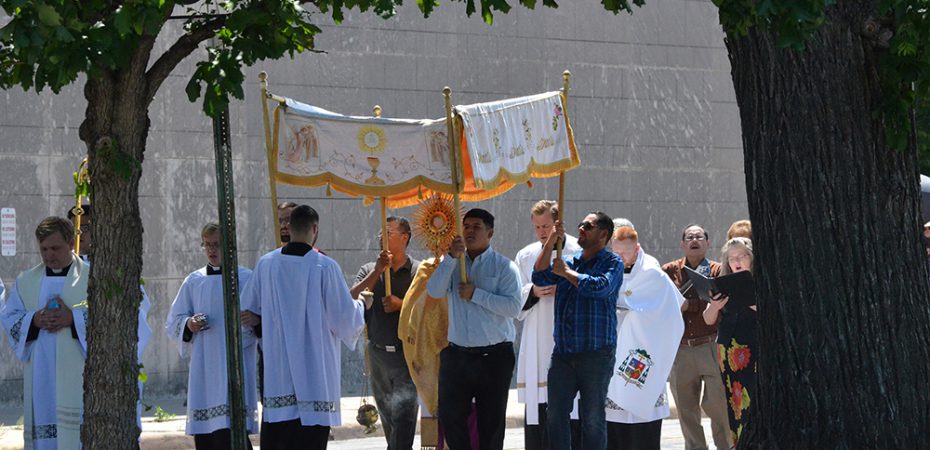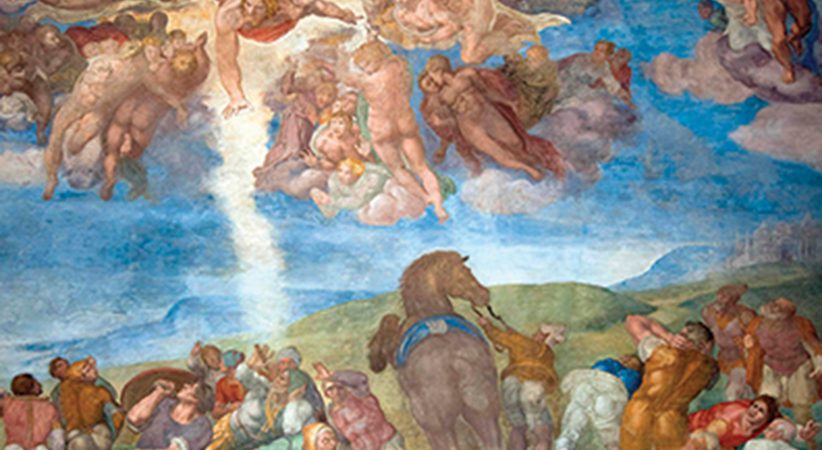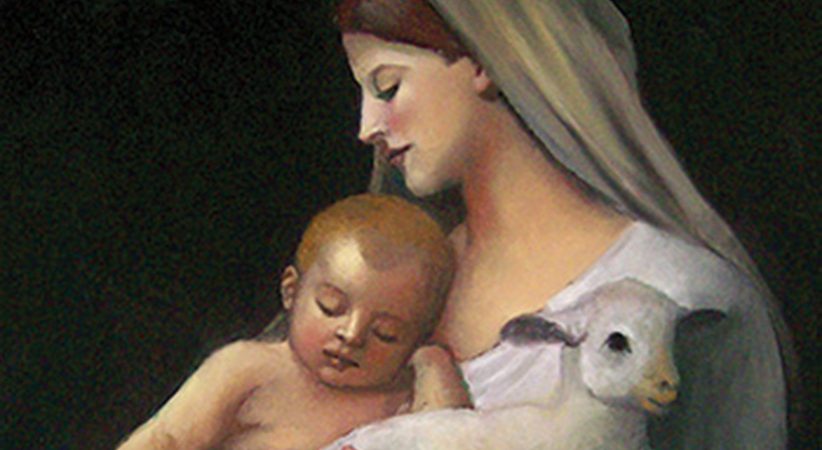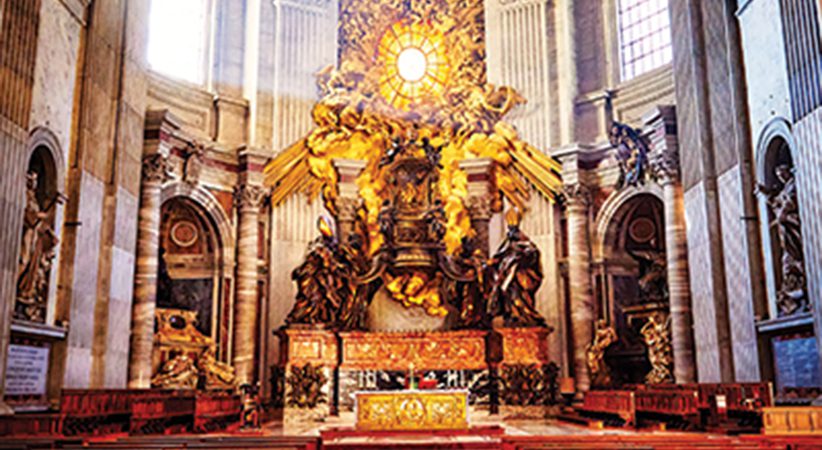Putting Christ on Display
Corpus Christi processions give witness to Jesus’ Real Presence
Paul Senz Comments Off on Putting Christ on Display
 Corpus Christi processions used to be very common. Images of priests clad in a cope, monstrance held aloft underneath the canopy, with a seemingly interminable line of worshippers and adorers fill the memories of many Catholics. But such images became less familiar as time went on.
Corpus Christi processions used to be very common. Images of priests clad in a cope, monstrance held aloft underneath the canopy, with a seemingly interminable line of worshippers and adorers fill the memories of many Catholics. But such images became less familiar as time went on.
However, in recent years there has been a resurgence in the popularity of this practice. Across the United States and around the world there has been a strong return to these beautiful and solemn processions.
The Corpus Christi procession is a profound and beautiful public witness to our faith in the Real Presence. We don’t parade around with insignificant objects held aloft. The Eucharist is the source and summit of the Church’s life (cf. Lumen Gentium, No. 11). These processions show the world just how seriously individual Catholics and the Church as a whole take this.
The full name of the feast is Corpus et Sanguis Christi, and it was established in 1246 by Bishop Robert Thorete of Liège, Belgium. Pope Urban IV extended the feast to the universal Church in 1264. St. Thomas Aquinas composed the office for the feast, and this was approved by Pope Martin V, with the customary procession accompanying the feast approved by Pope Eugene IV. The feast falls on the Sunday after Trinity Sunday, which this year is June 20.
Each year the pope leads a Corpus Christi procession through the streets of Rome from the Archbasilica of St. John Lateran to the Basilica of St. Mary Major, a remarkable sight when you consider the history of the Church in those very streets. It was through the streets of Rome that Christians were taken on their way to be slaughtered for sport and the entertainment of Roman citizens; it was in these streets that St. Tarcisius was martyred for refusing to give the Eucharist to “raging dogs,” as Pope St. Damasus wrote of him. And now Catholics process through those same streets in triumph, holding aloft the King of Kings.
One of the remarkable things about the Corpus Christi procession is that it creates a sort of mobile sacred space, which is a blessing to the entire route along which the procession runs. The Eucharist, of course, is contained in a monstrance, which should be a fittingly ornate vessel to hold the sacred Host. The priest, clad in a cope, walks underneath a canopy. The canopy serves both a practical purpose as well as a theological one. The practical purpose is that the canopy protects the monstrance from anything falling onto it, including precipitation. Theologically it serves as the recognizable enclosure of the sacred space, in one sense creating a mobile Holy of Holies, which easily can be seen by adorers, passersby and observers.
The procession is a supplement to the Mass held on Corpus Christi. In many ways this Mass is an echo of the Mass of the Lord’s Supper on Holy Thursday, which marks the institution of the Eucharist by Our Lord. The procession is an ornament to this Mass and involves transferring the Blessed Sacrament from the church to between one and four station altars outside. This is a pious act, not technically a part of the Corpus Christi liturgy. At each station altar a brief passage from the Gospel is read that pertains to the Eucharist, and a short homily is given. Benediction, adoration and the singing of the Adoro te Devote, Tantum Ergo and Te Deum also are part of the rite.
Father John Hardon wrote that Corpus Christi processions are “one time when Our Lord in the Blessed Sacrament is exposed not just to faithful Catholics but to all the world.” It is one of the most profound and beautiful things about such processions. The Church is not called to be inwardly focused and navel-gazing; the Church is sent out to preach the Gospel to all nations. What better way to spread the Good News of Jesus Christ than to carry him — body, blood, soul and divinity — in solemn procession through the streets?
PAUL SENZ holds a Master of Arts in pastoral ministry from the University of Portland and lives in Oregon with his family.





